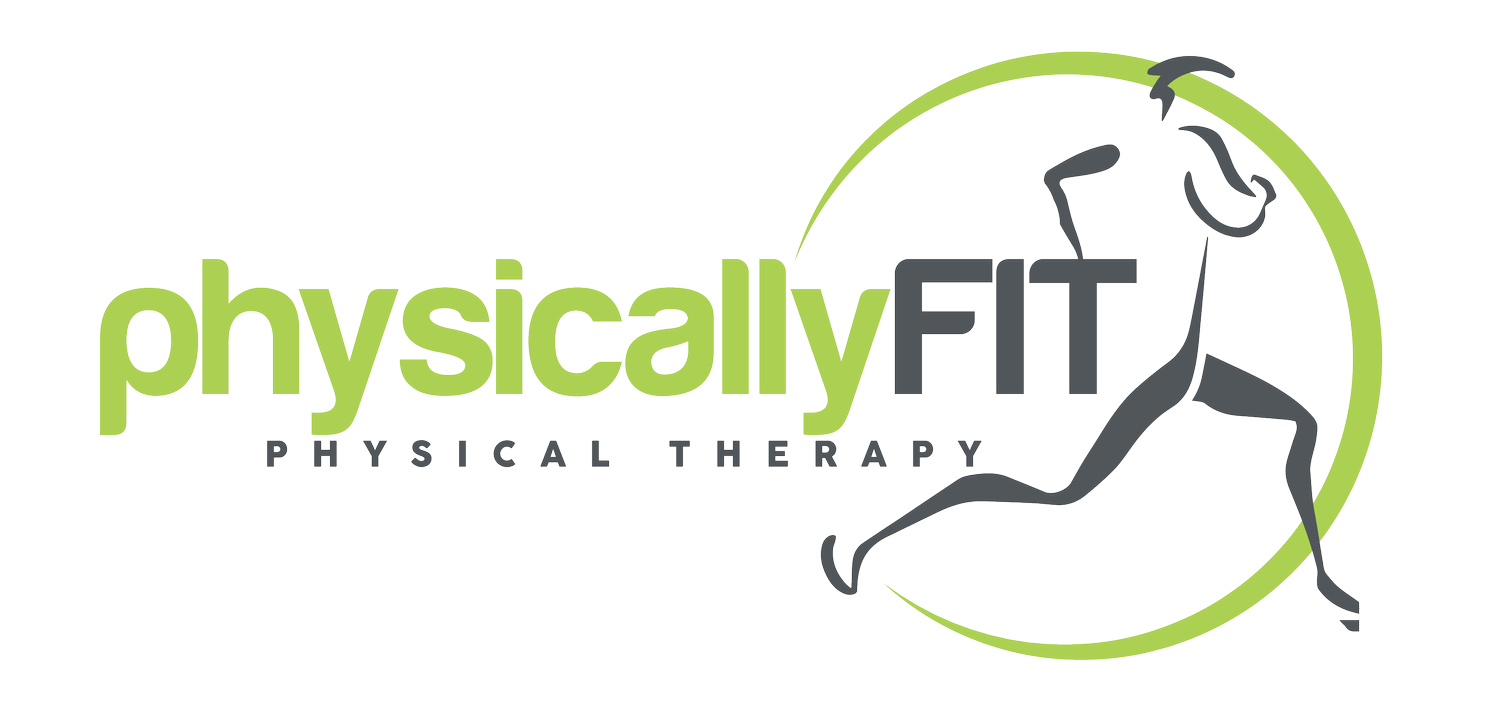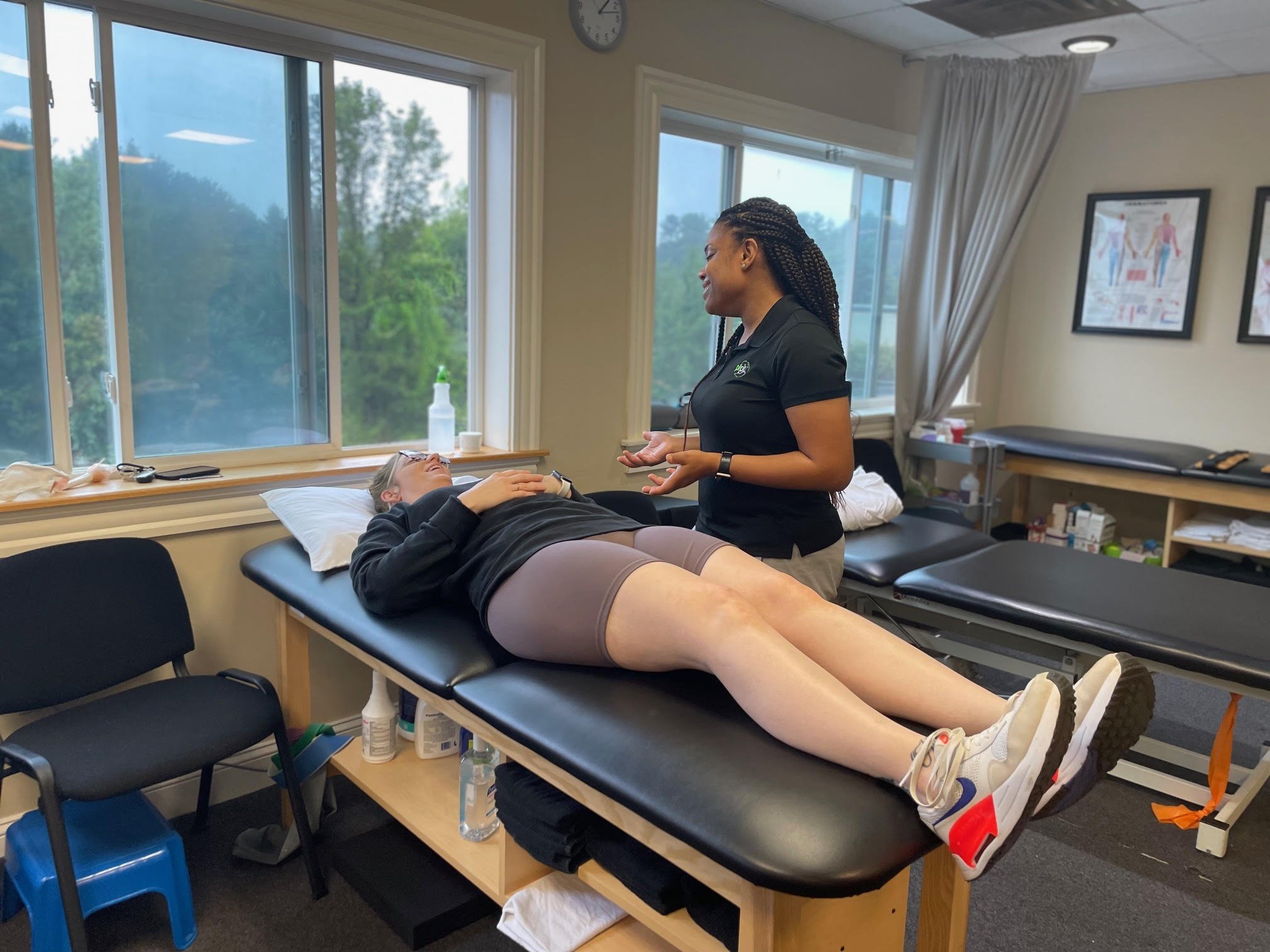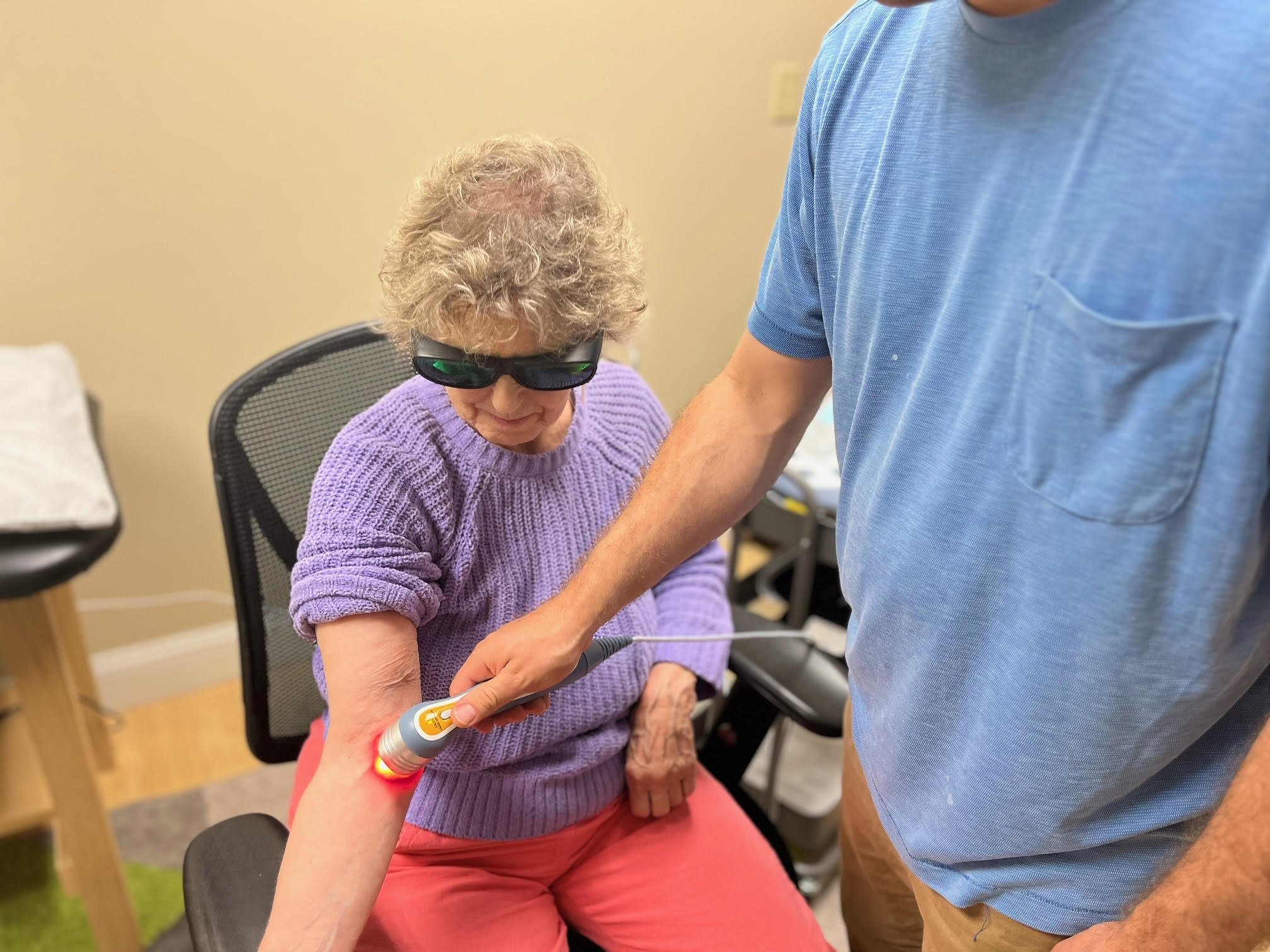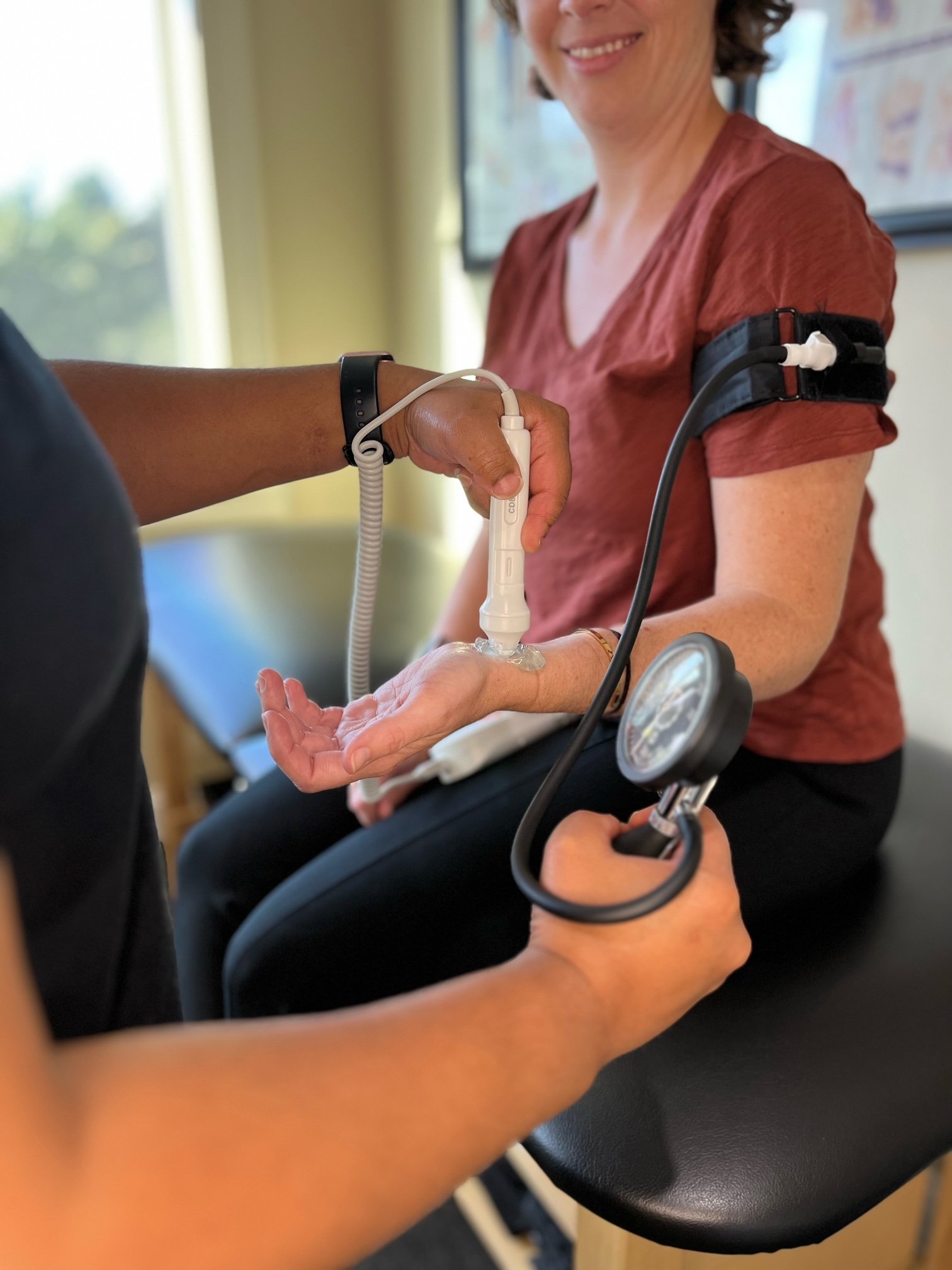RELIEVE MUSCLE PAIN AND IMPROVE FLEXIBILITY BY TARGETING TRIGGER POINTS IN THE MUSCLES

Dry Needling
Trigger point dry needling is a fantastic technique that our physical therapists use to help alleviate muscle pain. Think of it as a gentle approach where we use a very thin needle to target those pesky knots in your muscles and connective tissues. This little nudge encourages them to relax, improving your flexibility and getting you back to moving freely in no time. It's not as daunting as it may sound – it's just one of the many ways we help you get back to feeling your best.
Decreases Muscle Tightness
Dry needling can help reduce muscle tightness by targeting specific knots or trigger points in your muscles.
Increases Blood Flow
This enhanced circulation can accelerate your body's natural healing processes.
Reduces Pain
Dry needling can provide significant pain relief, including local and referred pain. It's even known to help relieve headaches.
What To Expect On Your First Day
Before Your Session
Before your trigger point dry needling appointment, you'll have a comprehensive evaluation with one of our certified therapists at our physical therapy office. We'll assess your pain areas and discuss your medical history to determine whether dry needling is the best treatment for you.
-
Comfortable clothing that allows easy access to the area being treated.
Any relevant medical records or imaging reports.
-
Preparation: You'll be asked to lie down on a treatment table in a position that allows easy access to the trigger points.
Needle Insertion: Our skilled physical therapy specialists will insert a fine, sterile needle into the trigger point. You may feel a slight prick, akin to a mosquito bite.
Muscle Response: Once the needle is inserted, it’s normal to feel a muscle twitch or cramp, which is a good sign that the treatment is effective.
Needle Removal: After a few minutes, the needle is removed, and the area is cleaned.
Post-Needle Care: We may apply heat, ice, or electrical stimulation to enhance the effects of the treatment.
-
You might feel immediate relief, or it could take a day or two to really feel the benefits.
Some people experience mild soreness in the treated area, which usually dissipates within 24-48 hours.
Your therapist will provide you with personalized after-care instructions, which may include stretching or other exercises to maximize the treatment's benefits.
-
Dry needle therapy, or dry needling, is a technique used in physical therapy to relieve muscle pain and improve flexibility. It involves inserting thin, sterile needles into specific trigger points in the muscles to alleviate tension and encourage healing.
-
Dry needling works by targeting trigger points, which are knots or tight areas in the muscles. The insertion of the needle helps relax these points, enhance blood flow, and stimulate the body's natural healing processes, reducing pain and improving range of motion.
-
Dry needling helps:
alleviate muscle pain
reduce tightness
increase flexibility
and improve blood circulation.
It's effective for treating local and referred pain, including conditions like headaches and muscle tension.
-
Dry needling should be performed by certified dry needling practitioners, such as trained physical therapists, who have undergone specialized training to ensure safe and effective treatment.
-
Most patients experience minimal discomfort during dry needling. You might feel a slight prick when the needle is inserted and possibly a twitch or cramp in the muscle, which indicates the treatment is working.
-
A typical dry needling session lasts about 15 to 30 minutes, though the exact duration can vary based on the individual's condition and treatment needs.
-
The frequency of dry needling sessions depends on the individual's specific needs and response to treatment. Generally, sessions can be scheduled weekly or bi-weekly, but your therapist will provide a tailored plan.
-
It's recommended to rest and avoid strenuous activities for 24-48 hours after a dry needling session to allow your body to respond to the treatment and maximize its benefits. Your therapist will provide specific after-care instructions.
Frequently Asked Questions About Dry Needling Physical Therapy
Remember, we're here to provide a comfortable, caring environment and to support you every step of the way. Feel free to reach out if you have any questions or to get started on your path to wellness.
Other Treatments We Offer
Laser Physical Therapy
Our laser physical therapy sessions utilize advanced laser technology to enhance recovery and relieve pain. This non-invasive treatment is effective for chronic pain and post-injury rehabilitation.
Blood Flow Restriction Therapy
Blood flow restriction therapy uses a specialized tourniquet system to build muscle strength and improve recovery. This innovative technique allows for effective training with lighter weights, reducing strain on joints.
Sport and Spine Physical Therapy
Sport and spine physical therapy focuses on rehabilitating sports injuries and addressing spinal health issues. Our expert therapists tailor treatments to enhance performance and facilitate recovery.





